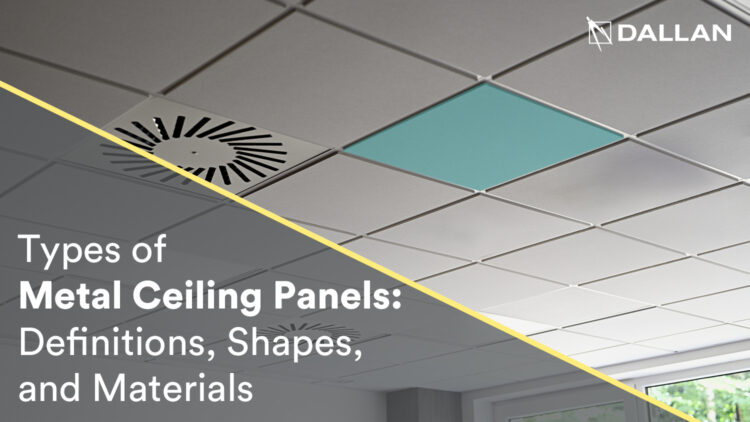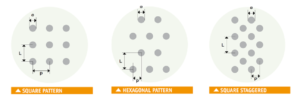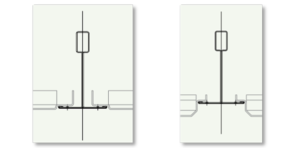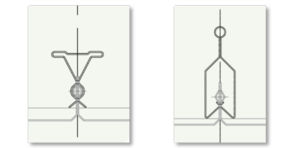Types of Metal Ceiling Panels: Definitions, Shapes, and Materials

Metal ceiling panels can have different shapes and may be made of pre-painted aluminum, pre-painted sheet metal, or post-painted sheet metal.
They can be non-perforated or, more commonly, perforated: in the latter case, they also serve a sound-absorbing function. If the panels fit into a T-bar structure, they are called Lay-in panels (thus, they are “resting” panels). In other cases, they are hooked onto a profile that remains hidden: this system is known as Clip-in or concealed structure.
First, let’s look at the perforations.
The most common perforations have a diameter between 1.5 and 2mm, and the density of the perforations is determined by the perforating mold used.
The arrangement can be square, hexagonal, or diagonal.

Some special perforations can have holes up to 0.7mm in diameter or increase to 3 or 5mm in diameter.
The panel can be completely perforated or only in the central part – depending on the desired effect.
On the back of the panel, a sound-absorbing fabric is usually applied, and in some cases, also filler material that increases the weight and sound-absorbing power of the panel.
Regarding bending, Lay In panels can have a bend such that they are level, and in this case, they are called “Flush” as shown in the figure on the left.

Alternatively, they can have an additional fold that makes them drop to different heights: 4, 6, or 8mm are quite common measurements (figure on the right).
Clip-In profiles, on the other hand, typically have a simple 90° bend and end with a 45° chamfer.
On the 90° bend, special indentations ensure that the panel stays in position within the support profile.
Below you see two examples.

CONTACT US
![]()
Andrea Dallan
CEO – Dallan Spa
